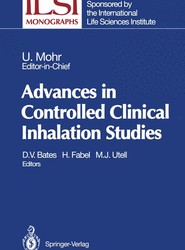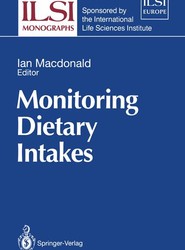(To see other currencies, click on price)
MORE ABOUT THIS BOOK
Main description:
The International Life Sciences Institute (ILSI), a nonprofit, public foundation, was established in 1978 to advance the sciences of nutrition, toxicology, and food safety. ILSI promotes the resolution of health and safety issues in these areas by sponsoring research, conferences, publications, and educational programs. Through ILSI's programs, scientists from government, academia, and industry unite their efforts to resolve issues of critical importance to the public. As part of its commitment to understanding and resolving health and safety issues, ILSI is pleased to sponsor this series of monographs that consolidates new scientific knowledge, defines research needs, and provides a background for the effective application of scientific advances in toxicology and food safety. Alex Malaspina President International Life Sciences Institute Contents Series Foreword . . . . . . . . . . . . . . . . . . . . . . . . . . . . . . . . . . . . . . . . . . . . . . v Contributors . . . . . . . . . . . . . . . . . . . . . . . . . . . . . . . . . . . . . . . . . . . . . . . . . xi Part I. Approaches to Assessing the Toxicity of Airborne Toxicants Chapter 1. Standard-Setting as an Integrative Exercise: Alchemy, Juggling, or Science? . . . . . . . . . . . . . . . . . . . . . . . 1 D. v. Bates Chapter 2. Species Differences in Inhalation Toxicology: Variations in Exposure-Dose Relationships and Macrophage Function. . . . . . . . . . . . . . . . . . . . . . . . . . . . 11 J. D. Brain Chapter 3. Cell Populations of the Respiratory System: Interspecies Diversity in Composition, Distribution, and Morphology . . . . . . . . . . . . . . . . . . . . . . . . 25 e. G. Plopper, A. Mir, J. St. George, N. Tyler, A. Mariassy, D. Wilson, S. Nishio, D. Cranz, J. Heidsiek, and D. Hyde Chapter 4. Comparative Metabolic Basis for the Disposition and Toxic Effects of Inhaled Materials . . . . . . . . . . . . . . . . . 41 A. R. Dahl Part II. Methodological Issues in Designing and Conducting Studies with Laboratory Animals Chapter 5. Exposure Facilities and Aerosol Generation and Characterization for Inhalation Experiments. . . . . . . . . .
Contents:
I. Approaches to Assessing the Toxicity of Airborne Toxicants.- 1. Standard-Setting as an Integrative Exercise: Alchemy, Juggling, or Science?.- 2. Species Differences in Inhalation Toxicology: Variations in Exposure-Dose Relationships and Macrophage Function.- 3. Cell Populations of the Respiratory System: Interspecies Diversity in Composition, Distribution, and Morphology.- 4. Comparative Metabolic Basis for the Disposition and Toxic Effects of Inhaled Materials.- II. Methodological Issues in Designing and Conducting Studies with Laboratory Animals.- 5. Exposure Facilities and Aerosol Generation and Characterization for Inhalation Experiments.- 6. Different Methods Used in Acute and Subchronic Inhalation Studies of Potential Lung Irritants, with Particular Attention to Lung Function Measurements.- 7. Chronic Inhalation Toxicity Studies: Protocols and Pitfalls.- 8. Carcinogenicity Protocols.- III. Interpretation of Toxicokinetic Studies with Airborne Toxicants.- 9. Interspecies Dosimetry of Reactive Gases.- 10. Behavior of Inspired Aerosol Boli in Humans.- 11. Respiratory Tract Clearance of Particles and Substances Dissociated from Particles.- IV. Interpretation of Results Using Laboratory Animals.- 12. Interpretation of Early Lesions in the Mouse Lung: Fibrogenesis and Tbmorigenesis.- 13. Relevance to Humans of Experimentally Induced Pulmonary Tumors in Rats and Hamsters.- 14. Experimentally Induced Emphysema and Long-Term Nitrogen Dioxide Inhalation.- 15. Comparison of Respiratory Function Responses of Laboratory Animals and Humans.- V. Risk Assessment of Airborne Toxicants.- 16. Population Studies in Risk Assessment: Strengths and Weaknesses.- 17. Human Clinical Exposure Studies: Body Box or Pandora's Box?.- 18. Occupational Exposure Standards in Europe: History, Present Status, and Future Trends.- 19. Current Approaches for Determining Workplace Exposure Limits in the USA.
PRODUCT DETAILS
Publisher: Springer (Springer-Verlag Berlin and Heidelberg GmbH & Co. K)
Publication date: September, 2011
Pages: 344
Weight: 522g
Availability: Available
Subcategories: Pathology, Respiratory Medicine
From the same series






